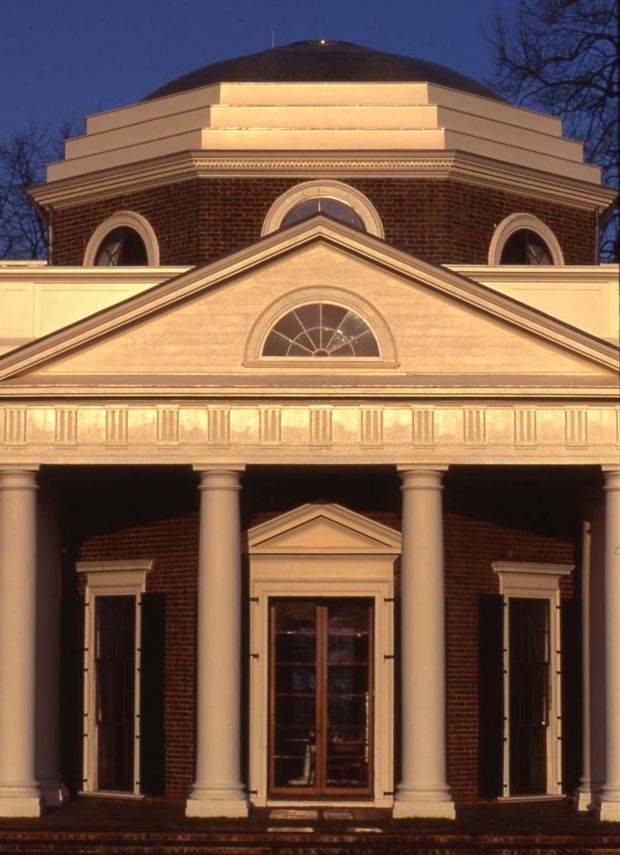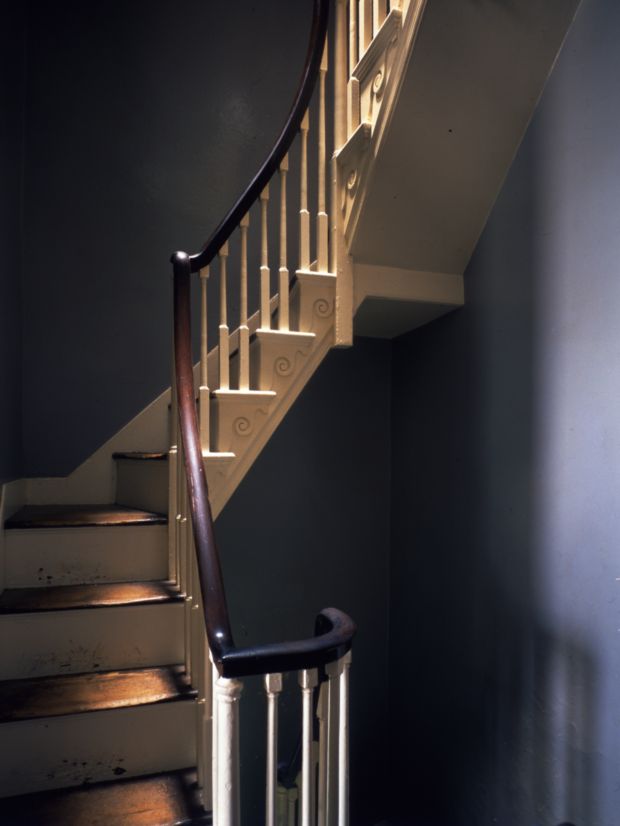Jefferson and Architecture
Reading Level: Middle School
“Architecture is my delight”
When Thomas Jefferson died, he left over five hundred drawings and architectural documents. He drew plans for his own house, Monticello. He also drew plans for towns, government buildings, churches and educational institutions. He felt that the buildings in America should be symbols of the new country’s democratic ideals.
At the time, there were no schools of architecture. Jefferson was self-taught. He read books and studied the work of architects such as Andrea Palladio (1508-1580). Palladio used the ancient buildings of Rome as models for his own work. Jefferson also admired the classic style of the Romans. He wrote that “Roman taste, genius and magnificence excite ideas”.
“Never more than half finished”
Jefferson’s famous house, Monticello, took forty years to build. He sketched his first plan in the 1760s. Palladio’s models and classic Roman elements such as columns and pediments influenced his drawings.
In 1768, Jefferson prepared to build his house. Hired and enslaved workers leveled the mountaintop and built kilns to make bricks. They dug a cellar and well and cut timber. The South Pavilion, a small brick building, was completed in 1770. Jefferson brought his new wife, Martha, to live there while the main house was being built.
The first Monticello was two stories with eight rooms. Although the inside was typical of a Virginia plantation house, the outside reflected Jefferson’s interests in architecture. Jefferson wanted Monticello to be “an essay in architecture.”
Throughout the Revolutionary War, Jefferson’s workers continued to work on Monticello. In 1784, Jefferson left for France. He was excited by the neoclassical architecture he saw in Paris. Jefferson was impressed with the Hôtel de Salm, a one-story domed townhouse, and the Palais Royal. He returned to America in 1789 with many ideas.
In 1796, Jefferson’s hired and enslaved craftsmen began to remodel Monticello. They added many features that Jefferson had admired in France: two-story public rooms, skylights, indoor privies, and narrow staircases. They added a dome-shaped room to the third floor. Monticello was the first house in America to feature an exterior dome, which Jefferson sometimes called the “sky-room.” The dome room was used for many different purposes over the years. It was even used as a bedroom for Thomas Jefferson’s oldest grandson Thomas Jefferson Randolph and his wife Jane.
In 1809, Jefferson retired from the presidency. Monticello was finally complete. There were thirty-three rooms in the main house, four in the pavilions, and six under the South Terrace.
Jefferson also gave much thought to the beauty and function of Monticello’s interior. For each room he used different ideas that he discovered during his travels and his readings. The Entrance Hall and other public rooms were two stories high. Bedrooms were smaller with lower ceilings. Second and third floors were reached by narrow private staircases at each wing of the house. During Jefferson’s time, family and house guests stayed in these rooms. Anna Thornton recalls, “When we went to bed we had to mount a little ladder of a staircase …"
“Father of our National Architecture”
While in France, Jefferson was asked to help plan the Virginia State capitol in Richmond. Jefferson’s drawings were influenced by a Roman temple, the Maison Carrée in France. When Jefferson became Secretary of State, his ideas influenced the style of the government buildings in the new capital of Washington, D.C. Jefferson hoped to “improve the taste of his countrymen” by introducing the neoclassical style he’d seen in Paris.

Jefferson’s South Elevation of the Rotunda, 1819 (N-328, K-8); Image courtesy Special Collections, University of Virginia Library.
When Jefferson retired, he designed the first buildings for the University of Virginia. He called it his “academical village”, a place for students and professors to live and learn democratic ideals. The University’s domed Rotunda was modeled after the Roman Pantheon. Today the campus is considered one of the most beautiful in the country.
In 1993, in honor of his works, Jefferson was awarded a Gold Medal. It was for “a lifetime of distinguished achievement and significant contributions to architecture . . .” The medal was presented to The Thomas Jefferson Foundation. Fortunately, buildings such as Monticello and Poplar Forest have been preserved. Today they are open to visitors, who can admire Jefferson’s unique homes, designed by the self-taught architect.




